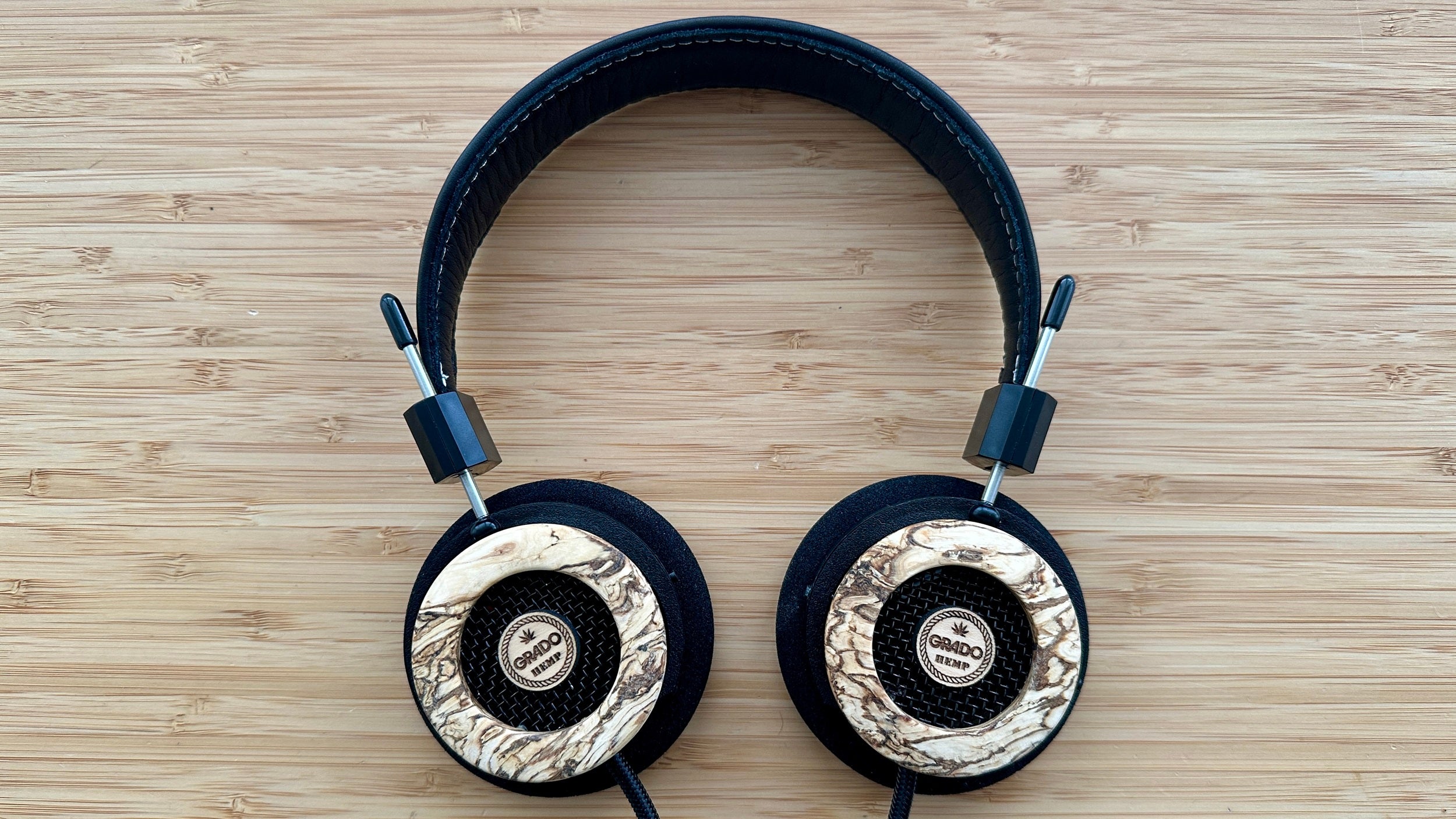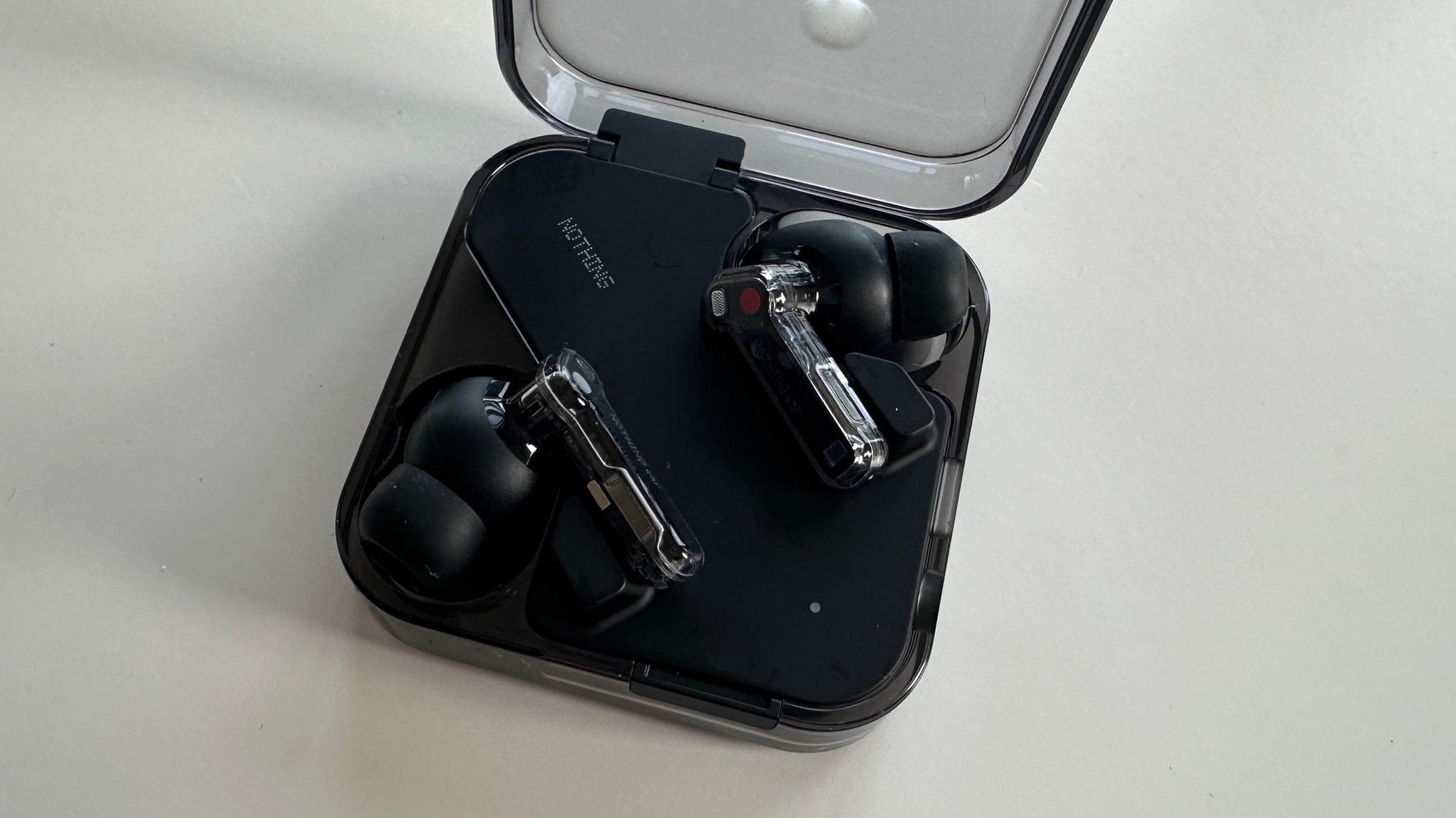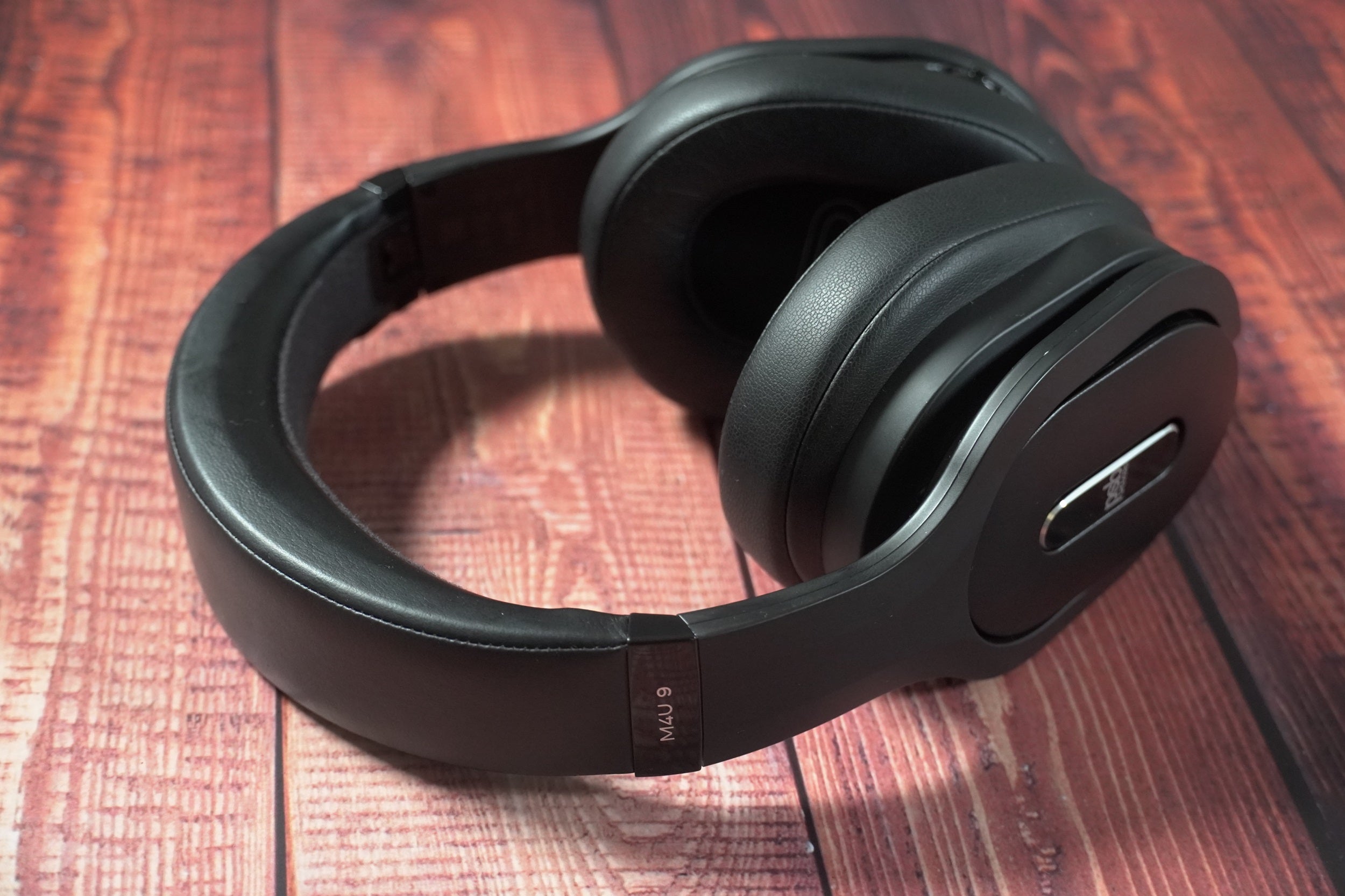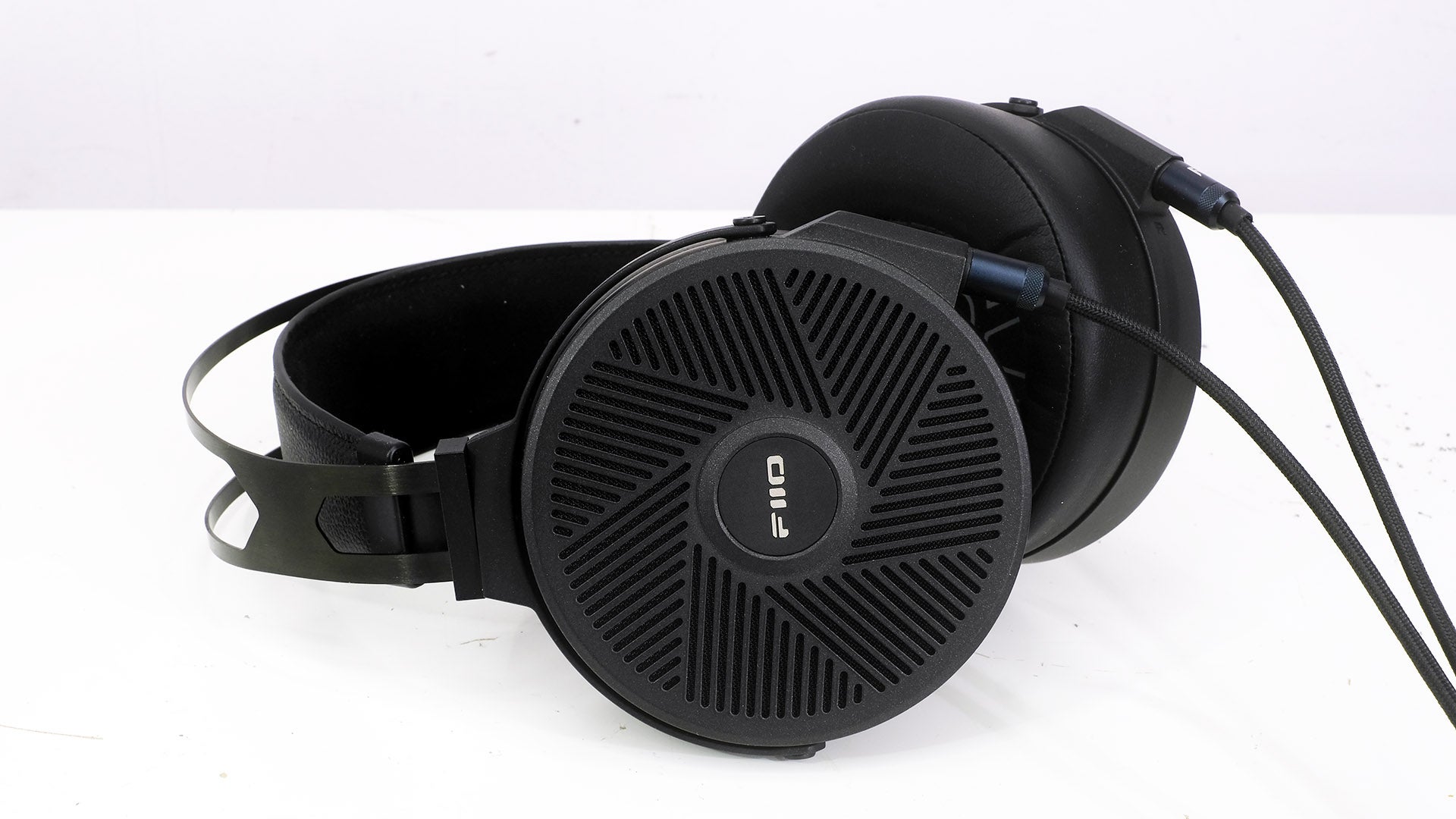Suunto Wing Review
Suunto’s debut headphones show promise, but they’re pricey
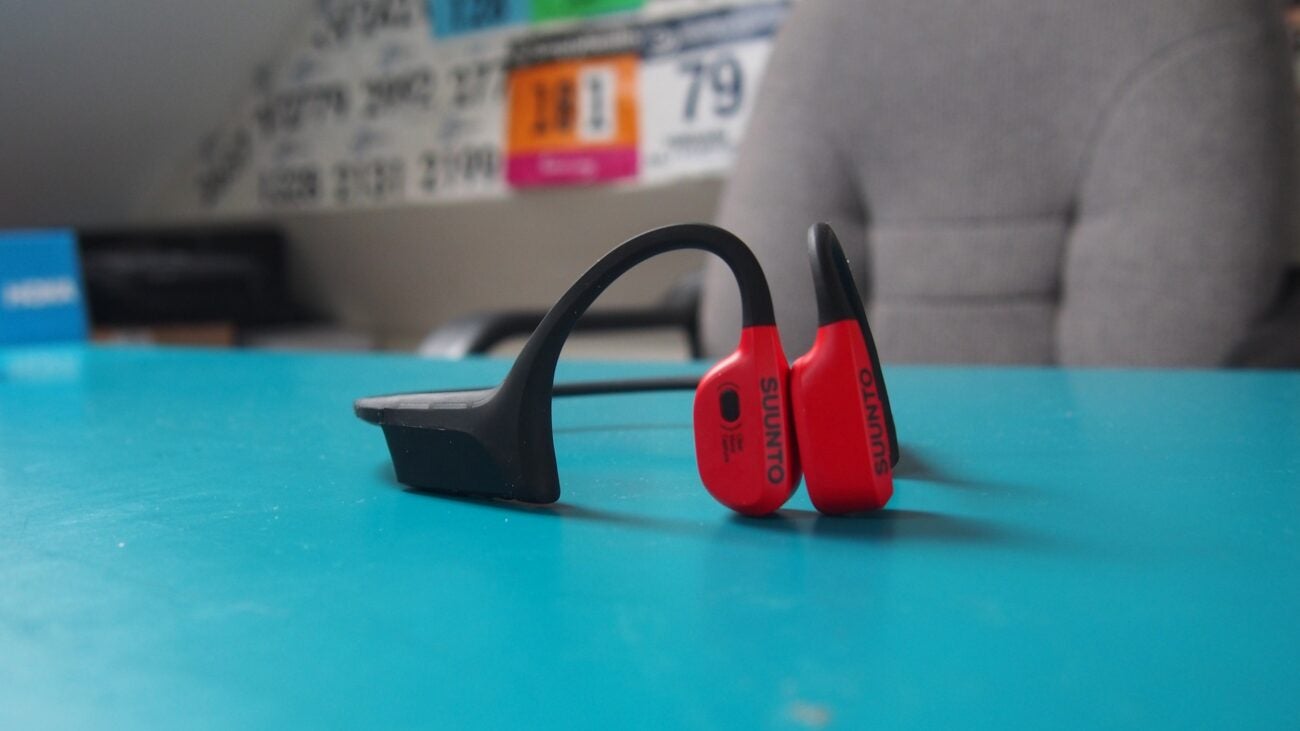
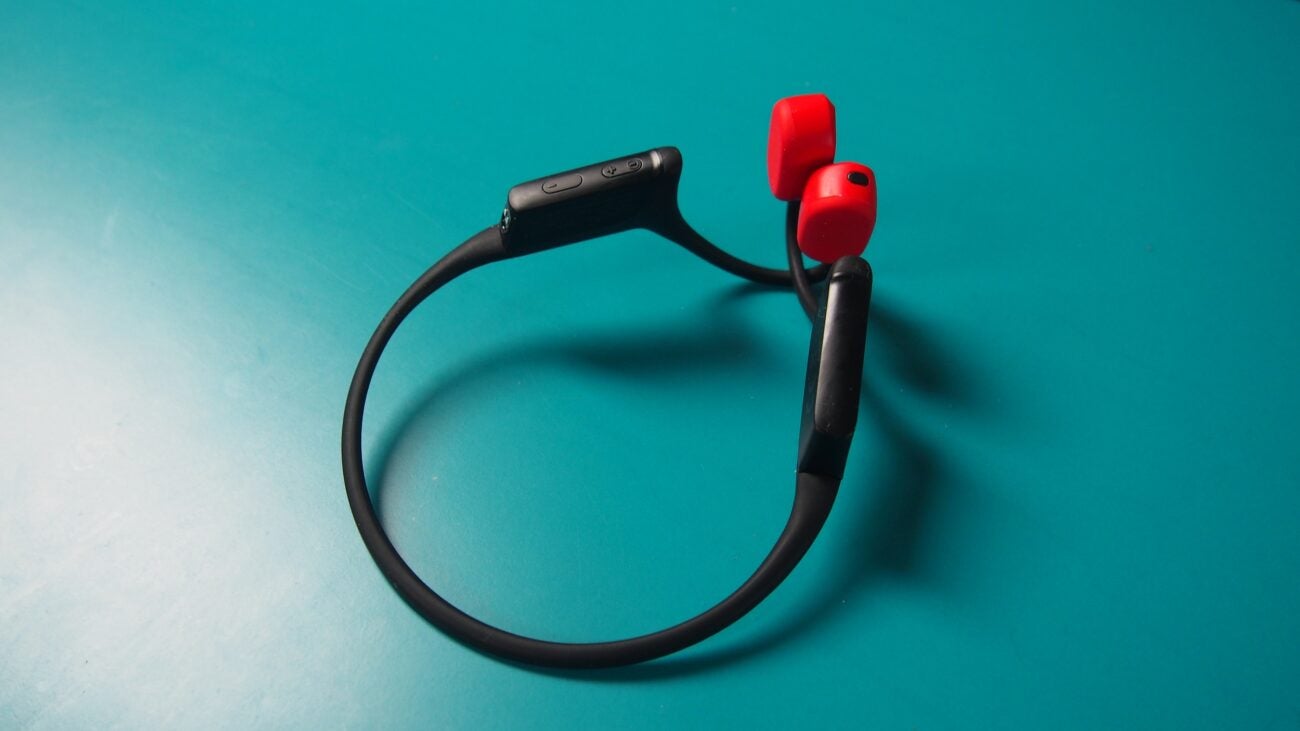
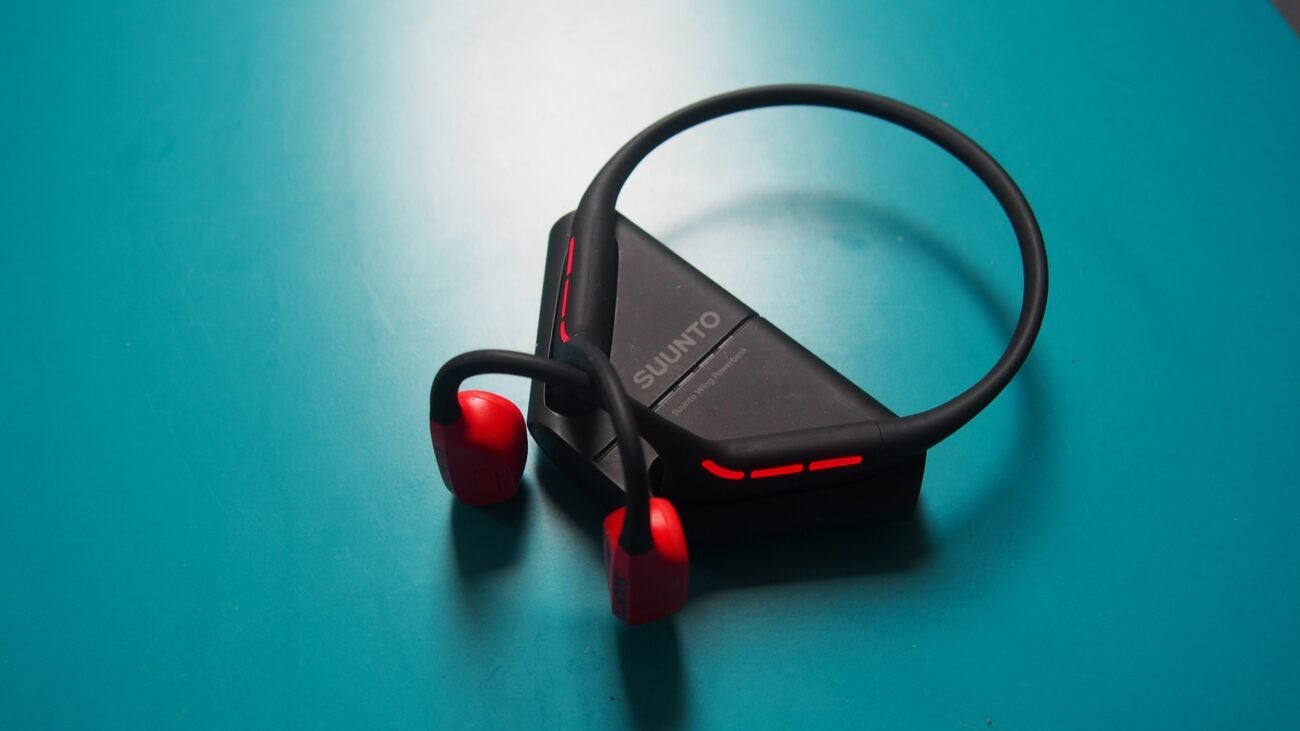
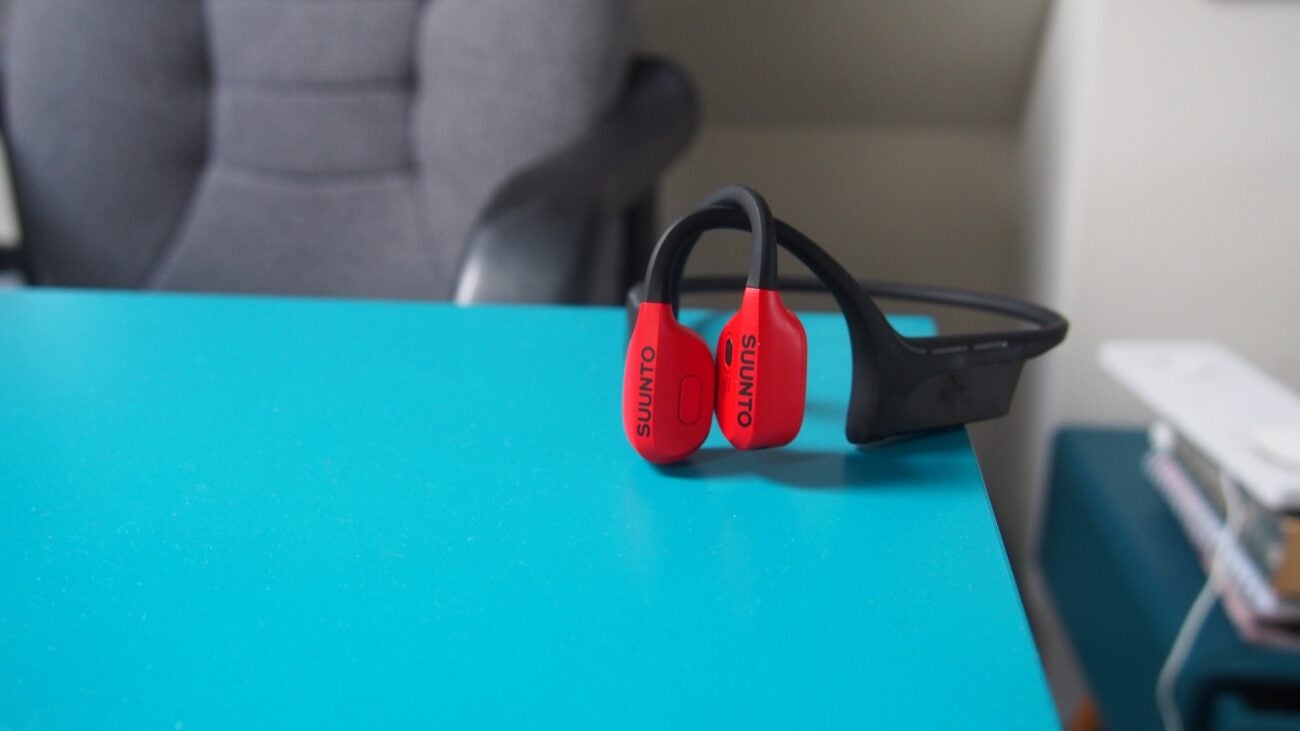
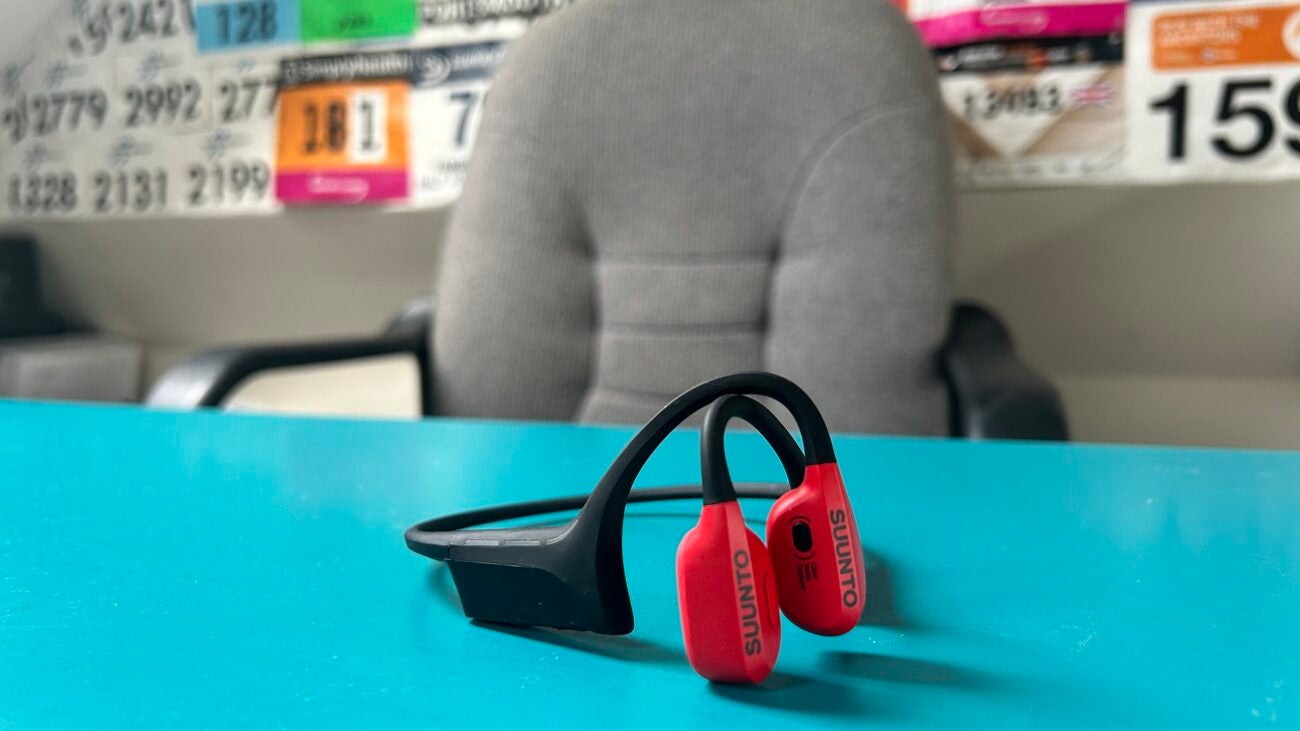
Verdict
It’s a solid first effort from Suunto with its first ever pair of headphones that offer some nice extras that do need finessing. Bottom line, they don’t quite outperform the cheaper competition.
Pros
- Secure fit
- Two sound modes
- Useful power bank included
- Connects quickly to Suunto app
Cons
- Battery drop at louder volumes
- Head gesture controls too sensitive
- LED light could be brighter
- Feels a touch pricey
Key Features
- Bone conduction Open ear sound with two presets available via Suunto app
- LED lights Customisable lights to improve visibility
- Power bank Portable charger to power up on the move
Introduction
The Wing is Suunto’s first ever pair of headphones that, unsurprisingly, are designed for people who like to spend their time outside.
The Wing adopts an open-ear, bone conduction headphone design and like its sports watches, aim to appeal to sporty types with features like LED lights for when you’re training in dark conditions and head-based gesture controls when you don’t have your hands free, and don’t want to stop mid-workout to fiddle with the physical controls.
It’s going up against the slightly cheaper Shokz OpenRun Pro and even cheaper bone conduction sports headphones like the Haylou PureFree BC01 and the Naenka Runner Diver. The open ear headphone competition is fierce right now, so the Wing really had to deliver on all fronts to compete. Right now, it feels like the Wing sits in and amongst those solid bone conduction options.
Design
- Familiar neckband look
- Waterproof and dustproof
- Power bank charger
Suunto sticks to a pretty typical bone conduction headphone design, with the neckband-style frame made of a mix of titanium and silicone. At 33g, it isn’t as light as the Shokz OpenRun Pro (27g) but doesn’t weigh heavy when in place. I’ve used them for well over an hour of continuous listening and they’ve not felt uncomfortable to wear.
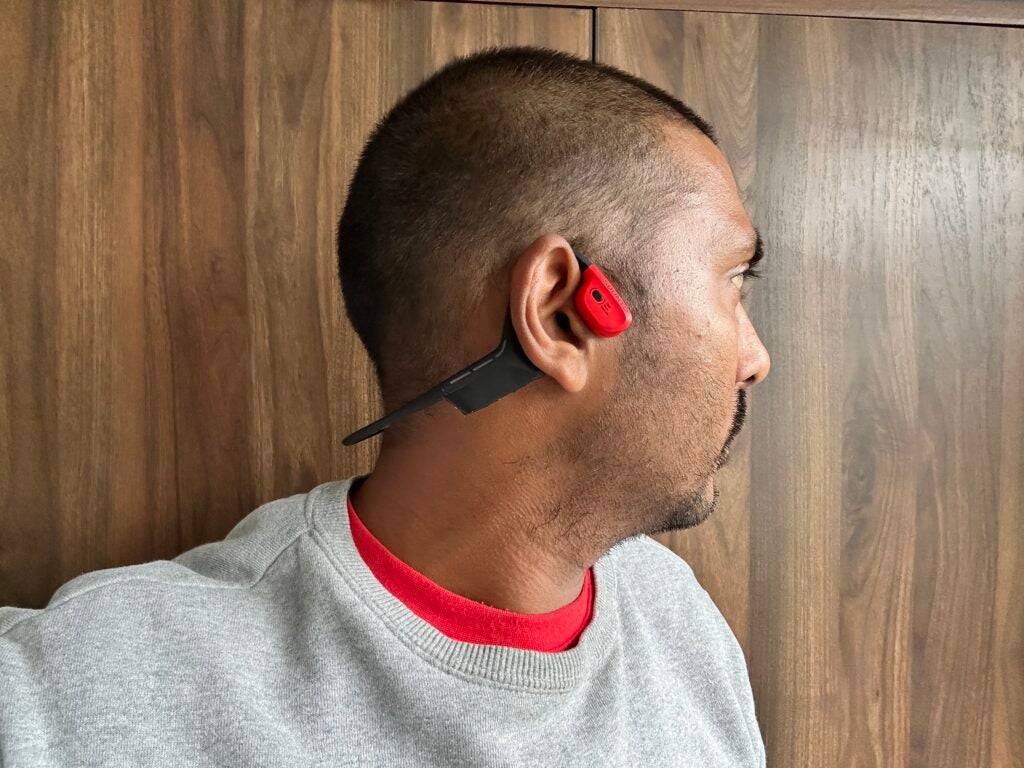
While you do notice them a little more than the OpenRun Pro, they do sit securely and don’t jump around. They’re more aimed at activities when you’re upright, like running and cycling, and you’ll find a more secure and reliable fit from ear hook-style headphone for HIIT workouts.
They come in black or black and red, and both versions feature an IP67 certified design, giving them some dust and water resistance and technically means you could give them a wash under the tap. This is about making sure they can handle sweatier workout sessions though and will survive a downpour. I was able to test them out in the latter and they survived a good soaking.
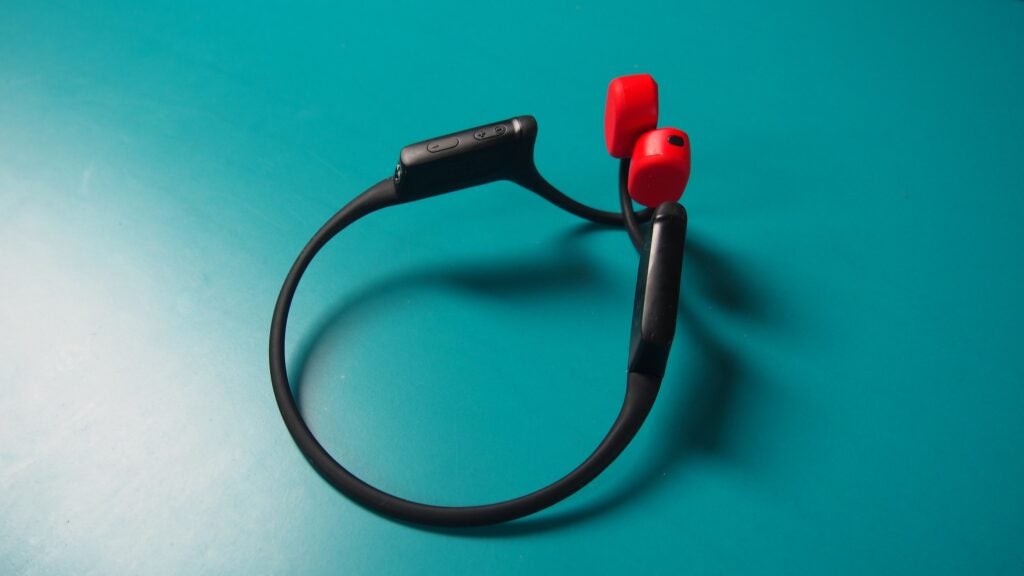
There are three physical buttons included in total. Two sit on the underside of the frame and let you adjust volume and switch the headphones on and off. The one that sits a little further back also lets you turn on the built-in LED lights on both arms. The multi-function button on the right arm lets you answer and hang up calls, play and pause audio, as well as skip tracks. The controls are easy to access and follow the layout of most other sporty bone conduction headphones.
When you need to charge the Wing, Suunto has opted against a setup where you plug the headphones into a proprietary charging cable. Instead, it uses a small charging cradle that doubles as a power bank, which is powered up by a standard USB-C cable. It’s not an unwieldy size so you can slip it into a pocket.
Features
- Customisable LED lights
- Responsive head gesture controls
- Multipoint connectivity
To help the Wing stand out from a jam-packed crowd Suunto has included a few extras that might make them more appealing than its rivals. One of these features I’ve seen crop up before and that’s the built-in LED lights that can be customised to blink or stay constant from the same app that Suunto uses for its watches. This is a feature I saw on the Philips TAA6606 and while the feature works in a similar fashion on the Wing, it does feel like they’d be more useful here if they were brighter.
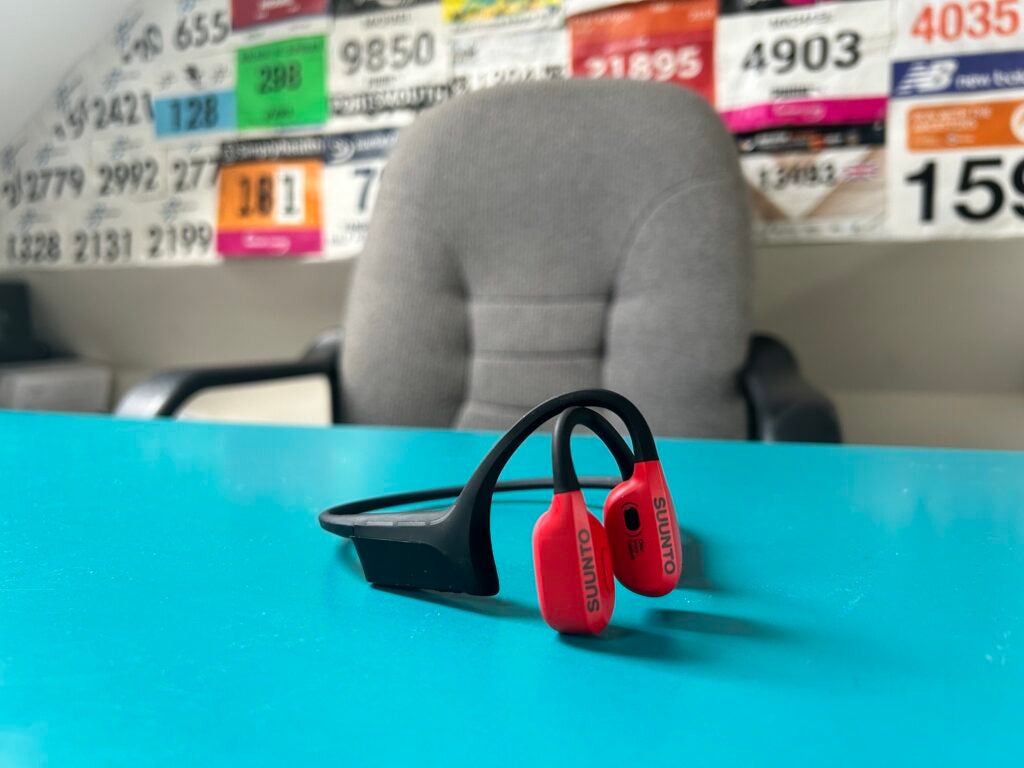
Suunto also includes a set of simple gesture-based controls that let you nod or shake your head to skip audio or accept and reject calls. The problem I found is that while the gesture controls work well, they do feel like they are a touch too sensitive. I tend to slightly move my head more when I run a bit quicker for instance and that causes the controls to constantly go off. Adding a sensitivity setting here would help.
Another useful extra is the dual Bluetooth connectivity, which means you can pair to two devices at the same time, making it easier to switch between the two. I was able to pair it to my phone, an Apple Watch Ultra 2 and a Garmin Forerunner 965 when I wanted to switch from streaming audio from my phone to my watch and vice versa.
Battery life, according to Suunto, can max out at 10 hours off a single charge and 30 hours in total with the fully charged power bank. That’s based on listening at 60% of the maximum volume. That drops to 8 hours with the head movement gestures, and four hours with the LED lights on.
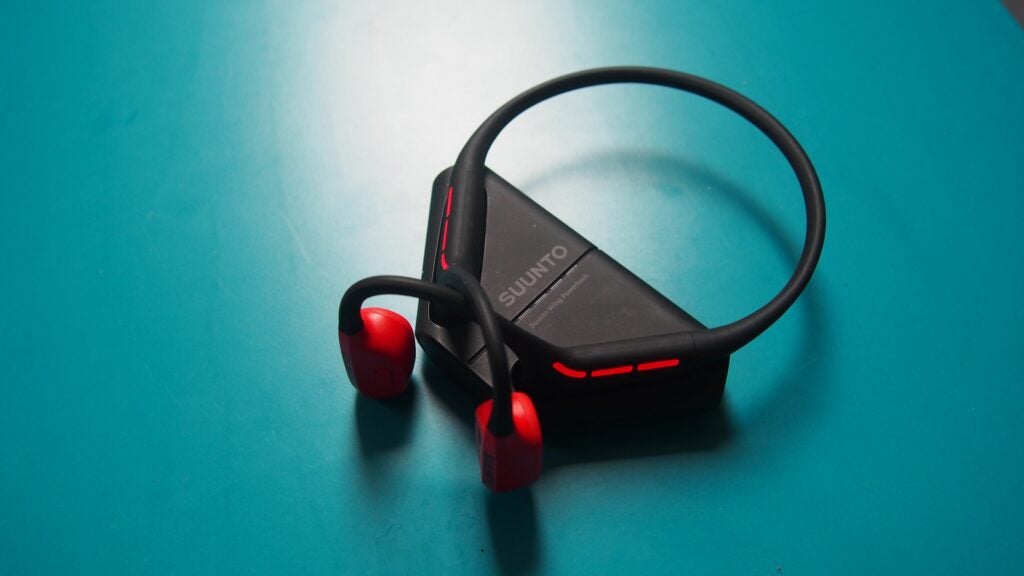
After just under two hours of use with headphones in its outdoor mode, with the head gesture controls and LED lights not in use, the battery dropped by 60%. For just under an hour of running with the LED lights and head controls in use, the battery dropped by 25%. It feels that realistically, you’re going to get on average half of that 10 hours if you’re listening at louder volumes and putting those extra features to regular use.
Sound Quality
- Good, but not class-leading bone conduction sound
- Two sound modes don’t feel hugely different
- Some vibrations at louder volumes
Bone conduction headphones have improved in recent years in terms of sound quality, but generally come up a bit short on the power and bass front, while also leaking sound to those around you.
I’d say the Suunto Wing sits just below the best sounding bone conduction headphones I’ve tried. It sits in the ‘good’ category, but I don’t think they sound quite as balanced or as polished as the Shokz OpenRun and OpenRun Pro or something like the Haylou Purfree BC01.
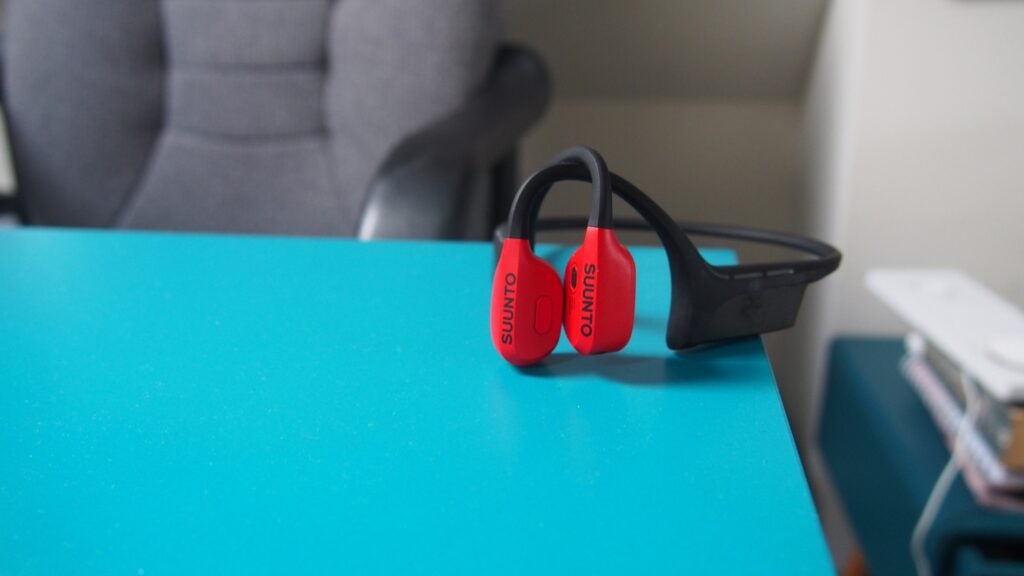
Suunto pitches these as headphones for people who exercise outside, so that’s where I spent the majority of my testing time with them. I also used them at home while working and at the gym to see how they’d hold up for indoor use. I listened to music via Spotify, Apple Music and a mix of podcasts and audiobooks. I also use the Songs to Test Headphones With playlist on Spotify as a useful indicator as to how the Wing can handle a mixture of genres.
Suunto offers two sound profiles, available to select from the Suunto companion app. That’s where you can also enable additional smarts. The normal mode is described as offering a more balanced performance. The Outdoor mode boosts overall volume though warns that noise can occur at higher volumes.
The overall profiles of both modes are nearly identical. The difference really does seem to lie with volume and having tried using the Normal mode outside, I quickly switched to the Outdoor mode as it struggled to compete against car traffic and other louder sounds.
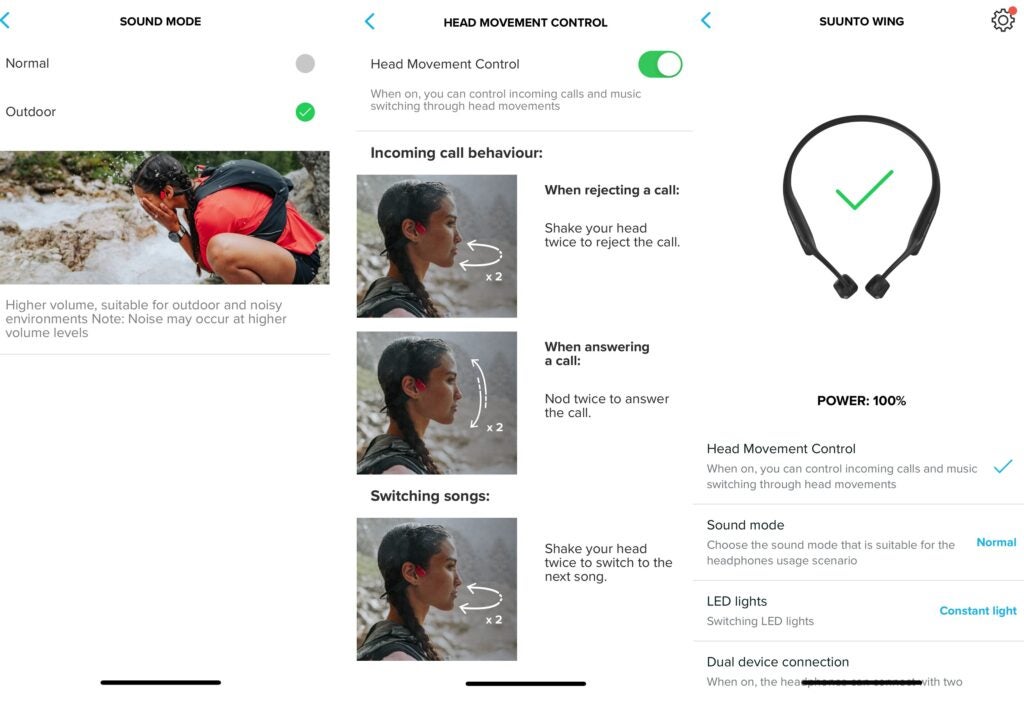
With New Order’s Regret, the Wing delivers pleasing warmth. When it’s time to handle a bit more bass like on Thundercat’s Them Changes or Erykah Badu’s On & On, there’s a little of the muddiness that’s associated with bone conduction headphones. At louder volumes, bassier audio produces that familiar bone conduction tickle. When you want trebles to sparkle and those mids to be buttery smooth on vocally rich tracks like London Grammar’s Wasting My Young Years, there’s a little harshness and boxiness in its place.
They sound best indoors when there’s less sound to contend with, outside it’s more of a challenge. The balance between audio and exterior sound is generally good, but unless you’re listening at louder volumes and in Outdoor mode, you won’t be able to enjoy the best that these headphones have to offer. They do leak too, so if someone’s in close proximity it won’t take long for them to be able to tune into what you’re listening to.
There is a microphone included, though Suunto doesn’t really make a big deal of the Wing’s call handling abilities. If you’re planning to use them to do your meetings on the move, it’ll be a challenge in louder environments.
Latest deals
Should you buy it?
You want bone conduction headphones that stay put
While not the lightest neckband bone conduction headphones available, the Suunto Wing does a solid job of sitting securely around your head. Even when you pick up the intensity.
You want the best sounding bone conduction headphones
The sound quality on the Suunto Wing is best classed as being very good, but they don’t quite have the same refined performance you can get from rival bone conduction headphones.
Final Thoughts
It’s an interesting move from Suunto to delve into the world of headphones when it’s trying to get back on track with its sports watches. The Wing brings together features I’ve seen on other bone conduction headphones, and while they’ll help the Wing to stand out from the crowd, they don’t blow you away to make you feel that they are worth spending more on than a pair of OpenRun Pro or the cheaper OpenRun.
How we test
We test every set of headphones we review thoroughly over an extended period of time. We use industry standard tests to compare features properly. We’ll always tell you what we find. We never, ever, accept money to review a product.
Find out more about how we test in our ethics policy
Tested across several days
Tested with real world use
Battery drain performed
FAQs
In general use, Suunto claims around 10 hours for the Wing headphones. We found that listening at higher volumes was around half that claimed figure. For more battery life, the Wing does support the addition of a powerbank that adds 20 more hours of playback.



